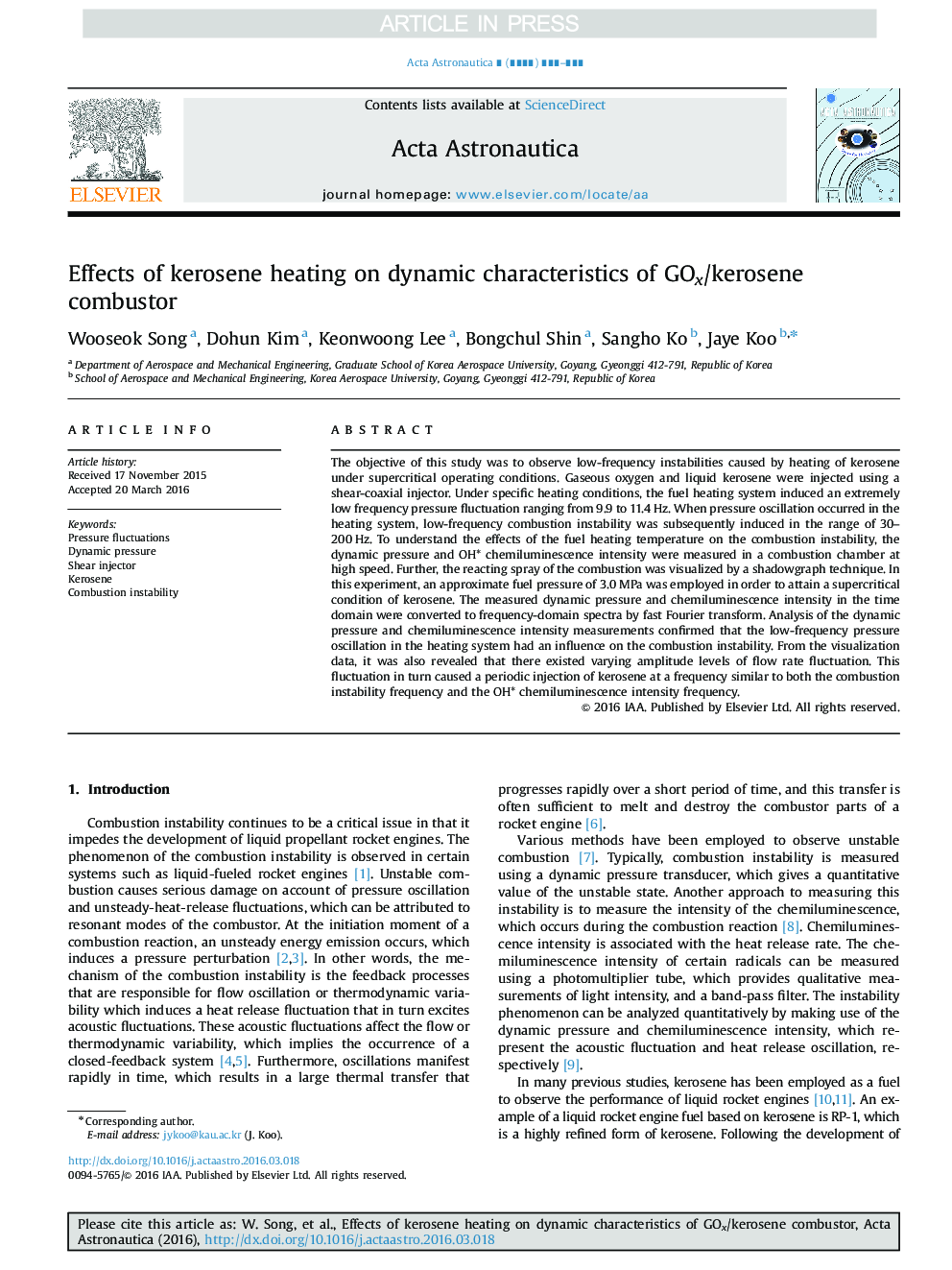| Article ID | Journal | Published Year | Pages | File Type |
|---|---|---|---|---|
| 8056209 | Acta Astronautica | 2016 | 8 Pages |
Abstract
The objective of this study was to observe low-frequency instabilities caused by heating of kerosene under supercritical operating conditions. Gaseous oxygen and liquid kerosene were injected using a shear-coaxial injector. Under specific heating conditions, the fuel heating system induced an extremely low frequency pressure fluctuation ranging from 9.9 to 11.4Â Hz. When pressure oscillation occurred in the heating system, low-frequency combustion instability was subsequently induced in the range of 30-200Â Hz. To understand the effects of the fuel heating temperature on the combustion instability, the dynamic pressure and OH* chemiluminescence intensity were measured in a combustion chamber at high speed. Further, the reacting spray of the combustion was visualized by a shadowgraph technique. In this experiment, an approximate fuel pressure of 3.0Â MPa was employed in order to attain a supercritical condition of kerosene. The measured dynamic pressure and chemiluminescence intensity in the time domain were converted to frequency-domain spectra by fast Fourier transform. Analysis of the dynamic pressure and chemiluminescence intensity measurements confirmed that the low-frequency pressure oscillation in the heating system had an influence on the combustion instability. From the visualization data, it was also revealed that there existed varying amplitude levels of flow rate fluctuation. This fluctuation in turn caused a periodic injection of kerosene at a frequency similar to both the combustion instability frequency and the OH* chemiluminescence intensity frequency.
Related Topics
Physical Sciences and Engineering
Engineering
Aerospace Engineering
Authors
Wooseok Song, Dohun Kim, Keonwoong Lee, Bongchul Shin, Sangho Ko, Jaye Koo,
